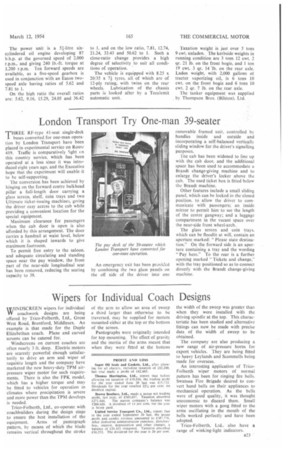14 Oil Engines Make a Load
Page 56

Page 57

If you've noticed an error in this article please click here to report it so we can fix it.
Q UCH is the popularity of the
Standard 2.1-litre oil engine as modified for use in taxicabsby Birch Bros., Ltd., Cathcart Street, London, N.W.5, that this concern is now supplying the unit to more than 50 taxi operators. So great has been the demand that Birch Bros., Ltd., found it necessary to devote a special vehicle to the transport of the engines from the Standard works in Coventry to London.
For this purpose a Leyland Comet short-wheelbase model is employed. The chief point of interest lies in the engine cradles which are used, thus obviating the need for any extra form of fixing.
There are four nests of cradles, each capable of taking four engines snugly located vertically. The cradles are made so that when a unlit is in position the base chamber is clear of the body•floor. Loading and unloading are simple operations and can be carded out by block and tackle from any suitable gantry.
This vehicle makes two or three journeys a week between Coventry and London, 16 engines being brought to London on every trip. All the 31 taxicabs operated by Birch Bros., Ltd., have been converted from petrol to oil and all the hopes of Mr. John Birch, who was responsible for the development work, have been realized.
The LeylandComet is used also as a breakdown vehicle, in which form the cradle nests are removed, and towing gear and crane hoist are installed. The power unit is a 51-litre sixcylindered oil engine developing 87 b.h.p. at the governed speed of 2,000 r.p.m., and giving 240 lb.-ft. torque at 1,200 r.p.m. Ten forward speeds are available, as a five-speed gearbox is used in conjunction with an Eaton twospeed axle having ratios of 5.62 and 7.81 to 1.
On the high ratio the overall ratios are: 5.62, 9.16, 15.29, 24.05 and 36.42
to 1, and on the low ratio, 7.81, 12.74, 21.24, 33.43 and 50.62 to 1. Such a close-ratio change provides a high degree of selectivity to suit all conditions of operation.
The vehicle is equipped with 8.25 x 20/35 x 7 tyres, all of which are of 12-ply rating, with twins on the rear wheels. Lubrication of the chassis parts is looked after by a Tccalemit automatic unit. Taxation weight is just over 5 tons 9 cwt. unladen. The kerbside weights in running condition are 3 tons 12 cwt. 2 qr. 21 lb. on the front bogie, and 1 ton 19 cwt. 3 qr. 14 "lb. on the rear axle, Laden weight, with 2,000 gallons of tractor vaporizing oil, is 6 tons 10 cwt. on the front bogie and 6 tons 10 cwt. 2 qr. 7 lb. on the rear axle.
The tanker equipment was supplied by Thompson Bros. (Bilston). Ltd.




































































































